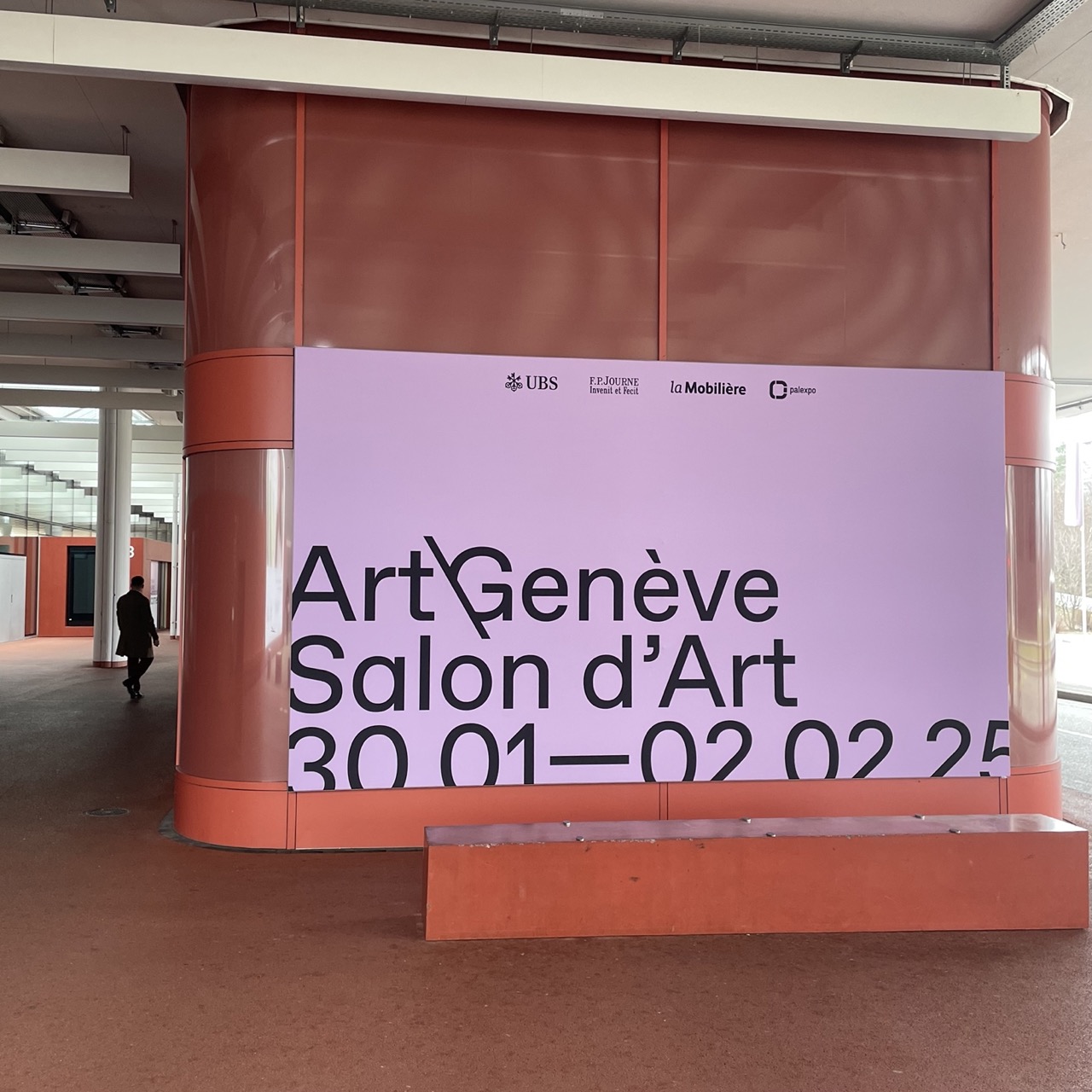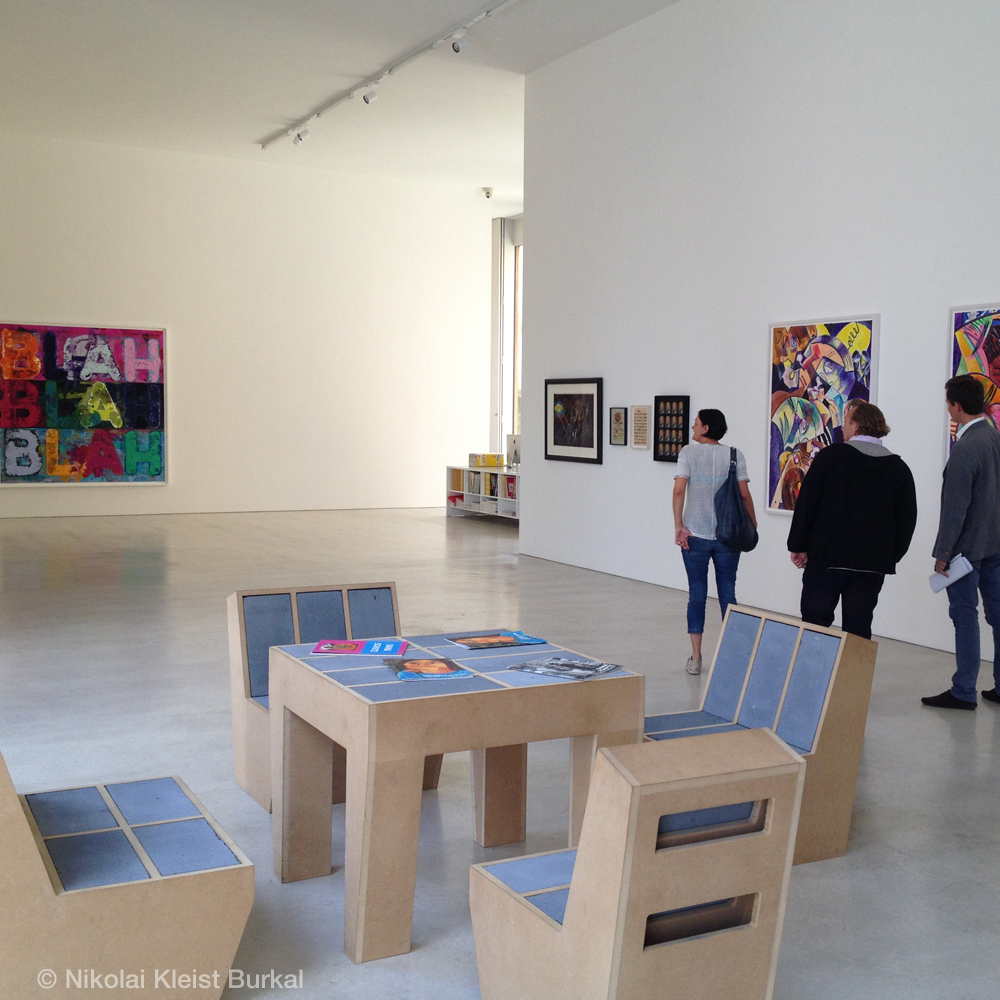Art Geneva 2025 took place from 30th January to 2nd February 2025 at the Palexpo in Geneva. This was the second time I visited the fair, and I was curious to see how this mid-sized art fair was developing.
Art Geneva is significantly smaller than Art Basel and Frieze. It hosted around 80 galleries, divided between those displaying catalogues of artists and those focusing on solo shows. There was a curated section for larger works and two spaces dedicated to awardees and the recognition of Swiss artists. In addition, there was a café, a bar, a restaurant, a partners’ lounge, booths for publishers, and an art talk space.
But what I found interesting in this fair, was the art talk about the practices of art archiving.

Archiving art
I started my visit by attending the art talk “Archivorum Ark – Chapter 2: The Practice of Archiving Art and Bridging Time and Memory.” I recognised this theme from last year; I suppose that is what they meant by Chapter 2. The dedicated art talk space was larger and much better staged than in 2024.
It took a while to introduce the panelists, but through their introductions, you already gained a good overview of the theme and the practices surrounding the archiving of art. This is not a theme I have given much thought about in the past, but it raised some interesting points. What happens not only to all the artworks in an artist’s private possession but also to all the notes, photographs, sketches, diaries, or any other supporting documentation that might help others understand the artist’s life, thoughts, and art process when the artist passes away? What are the practices for gathering and sorting this material, who keeps it, and what is it used for?
It is interesting because not all artworks are suited for sale, and not all museums can store full archives of all artists. So, who maintains these materials, and what are the methodologies used for preserving them?
It is easy to imagine that some blue-chip artists have extensive and valuable material stored in large museums, especially museums dedicated to specific artists. Similarly, galleries representing the estates of famous artists often hold a considerable amount of material, including archives of artworks. But what about lesser-known artists, or those deemed historically important after they have passed away?
Artist legacy and the preservation of ideas are key topics and challenges in the role institutions play in educating, mediating, and curating exhibitions for the public. In this context, good cataloguing and archiving practices seem essential. This is particularly true for exhibitions that publish art books alongside the exhibitions themselves. Achieving this requires, first and foremost, someone dedicated to the task, gaining access to the stored documentation, and possessing the expertise to catalogue, digitise, and organise this information for specific or future use.
That is where Archivorum Ark seems to come in. It is a relatively new organisation, established in 2023. It manages a library, organises public events, and conducts research projects. Its aim is to preserve, provide research, and educate about artists’ archives from around the world. Projects can be granted to artists or other art professionals who have a specific research project in mind, which might result in public events or publications, such as artists’ books.
I think this initiative has a fantastic philosophy and concept. It raises important considerations about what happens to all the art we, as artists, produce. How do we document our work and process, if at all? And how do we properly hand over artists’ archives to researchers and custodians?

Responsible Art Market Conference
The 9th edition of the Responsible Art Market Conference (RAM) is an annual event that takes place at the Palexpo during Art Geneva. It was held on Friday, 31st January, so I was unable to attend, but I thought it would be relevant to mention.
Like the practices of archiving art, this conference also seeks to address and solve practical challenges in the fine art world. Art experts attending the conference discussed topics such as artwork commission contracts and pricing, responsible art market practices, non-resale clauses, and the impact of art speculation on the sustainability of artists’ careers.
Some of the topics seemed to address broader issues, while others focused on specific and practical challenges. From my experience and work with ESG risk data, I know that words like “responsible” and “sustainability” should be used with care, as these terms are often exploited as smokescreens to make poor practices appear better than they are. I am not suggesting that this is the case here, and since I did not attend, I can only share the details about the conference’s intentions.
That being said, the topic of fine art and sustainable practices is an important one, and I should consider dedicating a separate article to this subject.

The fair as a whole
Looking at the rest of the art fair, I think there was a good mix of young and established artists. I counted about 30 galleries from or based in Switzerland, 24 from France, a few from Italy, Belgium, and the UK, as well as four Asian galleries. There were 30 solo shows, meaning galleries exhibited artworks by a single artist. I think this was a great approach. It signals the intention of galleries to highlight an artist, allows them to curate their booth more effectively, and, for future sales, the gallery can mention to potential buyers that the artist had a special show at this fair. As a fair visitor, it also provides a better understanding of the individual artist’s ideas and concepts.
I must note, having attended many art fairs, there are some artists you can always expect to see, such as Lee Ufan’s signature minimalist brushstroke paintings, Günther Förg’s multi-coloured grid paintings, there are always a couple of Picassos, and reproductions of Francis Bacon or Salvador Dalí in ghastly golden frames. While I understand there is a market for reproductions, I tend to skip them. I could dedicate a whole article to editions and reproductions, which could be another idea for the future.
All in all, Art Geneva was a positive experience. I gained a quick insight into some of the current discussion points in the art world. In terms of the art itself, I did not experience anything particularly new or groundbreaking, but that would have been too much to ask for. In comparison to Art Basel, which is by far the largest fair in Switzerland (and Europe), Art Geneva offers a more casual and intimate setting, which serves as a good platform for art discussions and opportunities to converse with gallerists.
If you want to hear more about eh Swiss art scene, check out previous article The Swiss Art Scene.
If you are interested in the world of art fairs, check out Art Fairs – who are they for and how to use them?
Further Reading:
– Art Geneva 2025
– Archivorum Ark
– Responsible Art Market Conference











